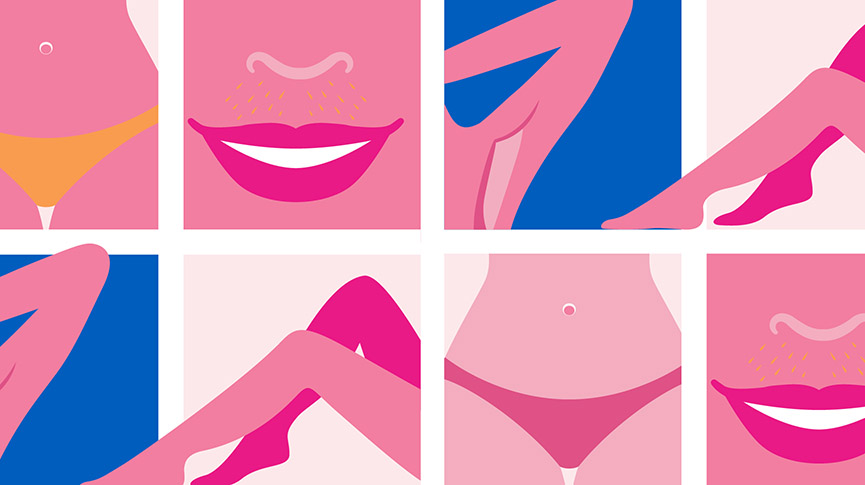Why Do We Shave? The Surprising History of Women & Hair Removal

It seems like no matter where you are, women are shaving everything from the neck down. But it’s no modern phenomenon–some archaeologists believe that body hair removal was embraced by cavewomen. So how did we get from scraping our body hair off with a sharp rock in a cave to today’s pretty pink shavers and bubble baths?
Why Do We Even Have All This Hair?
Let’s start by emphasizing the fact that having body hair is completely natural, and there is nothing inherently ‘dirty’ about it. Most adult bodies have about 5 million hairs, so it stands to reason that body hair serves a purpose. Covering nearly every part of your body, hair plays a role in skin sensory abilities and the temperature-regulating process of sweating.
These functions were of particular importance to our ancestors, whose very survival may have depended on being able to detect a bug crawling across their skin or being able to withstand heat. But as we have evolved, the need and desire for body hair has significantly declined.
Body Hair? How Barbaric!
Cavemen and women most likely removed the hair from their bodies and heads in an effort to keep anyone from grabbing onto it during battle and to help prevent frostbite. But starting in ancient Egypt, being hairless was less about survival and more a symbol of cleanliness and status. The wealthier you were, the more spare time you had to dedicate to tweezing out all your body hair–including your head–with a seashell. No wonder Cleopatra was a little on edge.
Fast forward to the Roman Empire, and not much changes in the way of body hair taboos. You may or may not have noticed that Roman statues and paintings depict women with absolutely zero body hair, pubic or otherwise. At the time, body hair was considered highly uncivilized, so wealthy men and women used flint razors to shave from head to toe. But once skin was no longer ‘in’, body hair became rather irrelevant.
If It Shows, Shave It.
From the Middle Ages up through the early 20th century, women’s fashion was incredibly conservative, so there was little reason to shave. With the dawn of the flapper era in the 1920s came sleeveless dresses, rising hemlines, and an onslaught of ads featuring women with smooth armpits. Young ladies were encouraged to remove “objectionable” body hair in their quest to become stylish, fashionable modern women.
Despite a brief drop in hemlines during the 1930s, women’s fashion has steadily grown more and more revealing, thus increasing the total area to be shaved. Following a shortage of nylon during WWII, women took to shaving their now-bare legs. As shaving among women became more common, companies took notice and thus the little pink razor was born.
Body Hair is for Men, Right?
For thousands of years, the universally accepted amount of female body hair has been slim to none; body hair seems better left to men. But that dynamic seems to be shifting, with more and more companies breaking female stereotypes in an effort to expand the public’s perception of what a ‘typical’ woman looks like. But ultimately, the decision to shave or not to shave–from your armpits to your legs to your bikini line–is totally up to you!

A collective group of “lady experts” at Intimina who love sharing our personal experiences, even when they are a little too personal. We believe it’s time to start breaking down the taboos around menstruation, motherhood, and menopause, and start owning our female health.


